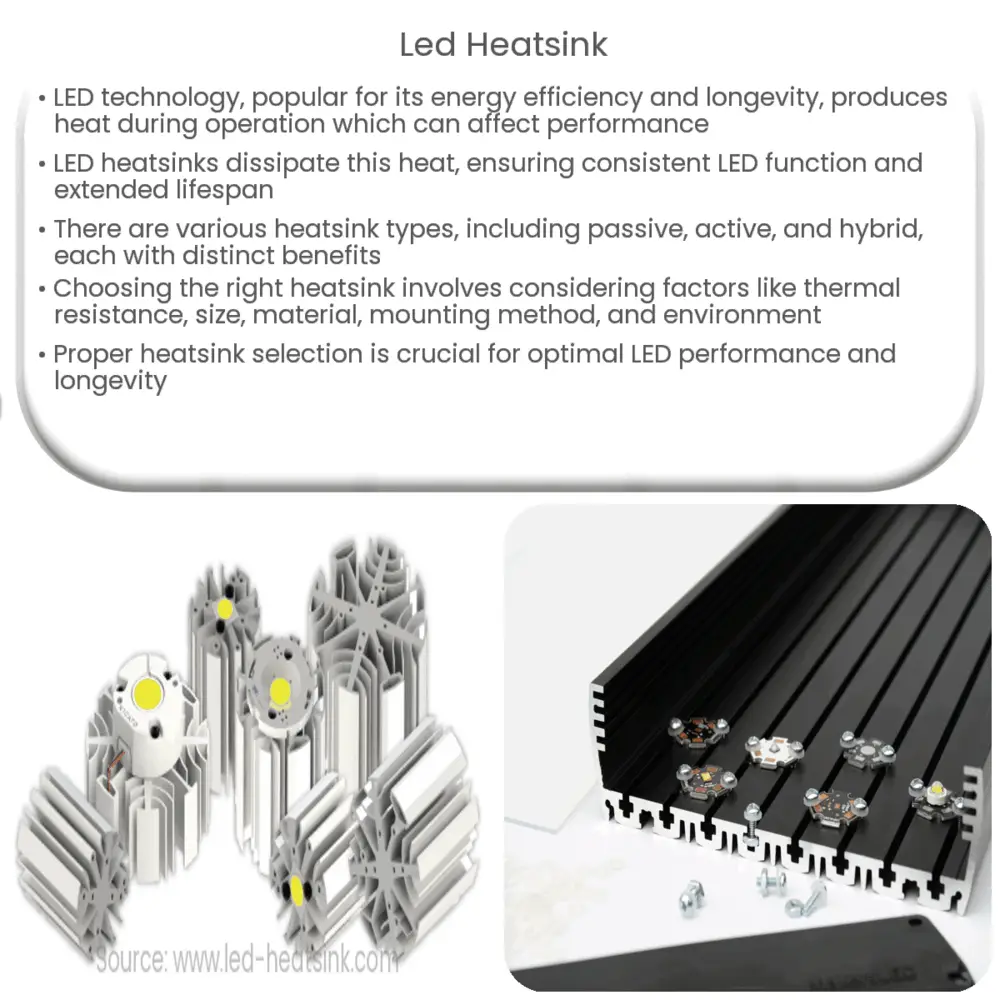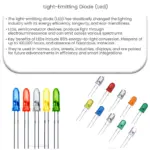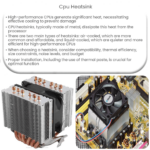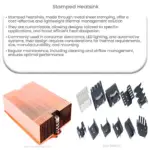LED heatsinks dissipate excess heat from LEDs, ensuring optimal performance, extended lifespan, and increased energy efficiency.

Understanding the Importance of LED Heatsinks
LED (Light Emitting Diode) technology has become increasingly popular in recent years, thanks to its energy efficiency, long-lasting performance, and environmental friendliness. Despite these advantages, one potential downside of LED lighting is the heat generated during operation. This is where LED heatsinks come into play. In this article, we’ll delve into the purpose, types, and benefits of LED heatsinks, as well as discuss the key factors to consider when selecting the ideal heatsink for your LED lighting application.
The Purpose of LED Heatsinks
While LEDs are known for their energy efficiency, they still produce some amount of heat as a byproduct of the electricity-to-light conversion process. Excess heat, if not managed properly, can lead to reduced LED lifespan, color shifting, and even complete failure. To prevent these issues, heatsinks are employed to dissipate the heat generated by the LED, thus maintaining its optimal operating temperature and ensuring its longevity and performance.
Types of LED Heatsinks
There are several types of heatsinks used in LED applications, each with its own benefits and limitations. The most common types include:
- Passive heatsinks – These are the simplest and most commonly used heatsinks, relying solely on their surface area, material, and design to dissipate heat. Passive heatsinks are typically made of aluminum or copper and come in various shapes, including finned, pin-fin, and plate-fin designs. The larger the surface area, the more effective the heatsink is at dissipating heat.
- Active heatsinks – Unlike passive heatsinks, active heatsinks incorporate a fan or other cooling mechanism to facilitate heat dissipation. This type of heatsink is more effective in high-heat applications but may generate additional noise and require more maintenance due to the presence of moving parts.
- Hybrid heatsinks – These heatsinks combine the benefits of both passive and active designs, utilizing both natural convection and forced airflow to maximize heat dissipation. While hybrid heatsinks can offer improved cooling performance, they may also be more complex and expensive than their passive counterparts.
Benefits of LED Heatsinks
Employing the appropriate heatsink for an LED application can provide several benefits, including:
- Extended lifespan – Proper heat management can significantly increase the longevity of an LED, preventing premature failure and reducing the need for frequent replacements.
- Improved performance – A well-designed heatsink helps maintain the LED’s optimal operating temperature, ensuring consistent light output and color quality throughout its lifespan.
- Increased energy efficiency – By effectively managing heat, a heatsink can help reduce the energy consumption of an LED system, ultimately leading to lower energy costs and a smaller carbon footprint.
Factors to Consider When Selecting an LED Heatsink
When choosing the ideal heatsink for your LED application, there are several factors to take into account:
- Thermal resistance – This is a measure of a heatsink’s ability to dissipate heat, expressed in degrees Celsius per watt (°C/W). Lower values indicate better heat dissipation performance. It’s essential to select a heatsink with a thermal resistance that matches the specific heat output of your LED system.
- Size and weight – The size and weight of a heatsink can have a significant impact on the overall design and form factor of your LED lighting system. It’s important to choose a heatsink that meets your specific size and weight requirements while still providing adequate cooling performance.
- Material – Heatsinks are typically made of aluminum or copper, with each material offering distinct advantages. Aluminum is lightweight and cost-effective, making it a popular choice for most applications. Copper, on the other hand, has better thermal conductivity but is heavier and more expensive. The choice between the two materials will depend on your specific needs and budget constraints.
- Mounting method – The way a heatsink is mounted to the LED can affect its heat dissipation performance. Common mounting methods include adhesive thermal tape, thermal epoxy, and mechanical fasteners. Consider the ease of installation, durability, and thermal performance when selecting a mounting method.
- Environment – The operating environment of your LED system can influence the choice of heatsink. Factors such as ambient temperature, humidity, and airflow should be taken into account to ensure optimal heat dissipation performance.
Conclusion
LED heatsinks play a crucial role in maintaining the performance, longevity, and energy efficiency of LED lighting systems. By understanding the different types of heatsinks available and carefully considering the factors outlined in this article, you can select the ideal heatsink for your specific application, ensuring optimal LED performance and a longer-lasting, cost-effective lighting solution.
Investing time in researching and selecting the appropriate LED heatsink can save you from costly replacements, system failures, and performance issues. Whether you are designing a small-scale residential lighting system or a large commercial installation, a properly chosen and installed heatsink can make all the difference in the success of your LED lighting project.




